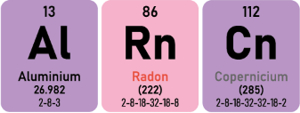Porn Discounts Sex Games Porn Games Juegos XXX Hentai Games PornStar Games 3D Porn Tantaly Sex Doll Cupsland Sextoy Live Cams DeepNude AI
Live Sex Free Live Sex Free Sex Games Páginas Porno Rose Toy Free OnlyFans Celebrity Fappening Celebrity Sex Videos TikTok Porn Best OnlyFans
Live Sex Free Live Sex Free Sex Games Páginas Porno Rose Toy Free OnlyFans Celebrity Fappening Celebrity Sex Videos TikTok Porn Best OnlyFans
Published on 2012/06/04
MIKOLAJ ZAJAC'S PHOTOGRAPHY
I can't tell you very much about the Polish photographer Mikolaj Zajac. He speaks little. A serious guy. You just view the photos, in silence, and then you keep surfing the Internet. If you like the photos, just nod when you meet him...










AMATEUR FLESH: MEI KOU
Mei Kou can be whoever you want her to be. Do you love Princess Peach? She could be Peach. Do you want Bowser? She can be Browser. Whoever you want.

# See photos
ExtraBall
Kamasutra Extrem.
ExtraBall2
(Clicking on these links daily you support ALRNCN's work. They're collaborators or sponsors and, by visiting their sites, they like us even more)









TIK HOT VOL203
TikTok is packed with dances, viral challenges, and slick transitions—but when things get a little too hot, those videos suddenly vanish. At least from the official map.
But there’s a parallel universe where those same girls let loose—with fewer filters, more skin, and zero censorship. Many of these clips still carry the TikTok watermark, but trust me, you won’t find them on the app. They start like any other viral trend… and end up in much steamier territory.
That universe? We named it Tik Hot a while back. And yes, I’ve got a fresh batch ready for you.

# Watch Videos
ExtraBall
Today’s slow-motion highlight.
ExtraBall2
(Clicking on these links daily you support ALRNCN's work. They're collaborators or sponsors and, by visiting their sites, they like us even more)




















RECOMMENDED SITES
 Add your site
Add your site
- Motherless
- Entensity
- Babes & Bitches
- BoobieBlog
- Erotic Beauties
- celeb-stalker.com
- Candid Teens
- drunkenstepfather
- sweetlicious
 Add your site
Add your sitePorn Discount
💩 CrazyShit
🤪 eFukt
NudeChatGirls
👉🍑 Top XXX Pictures
Bingo Porno
Best Porn Blog Sites
Sex Games
Real Amateur Porn
MrPornGeek
CamBB.xxx
ChatSex.xxx
Comepollas
PornScn Free Porno
AI Girlfriend App
DeepNude AI

















SLAVE LEIA OUTFIT
Carrie Fisher hated the metal bikini she had to wear as Jabba’s prisoner.
The famous “Slave Leia outfit” from Return of the Jedi was as uncomfortable as it was revealing. Parts of it were made of rigid metal, making it nearly impossible to move or sit normally. Every time Carrie leaned back, the costume would shift and expose more than intended, so the crew had to constantly fix it between takes.
Over time, the outfit—originally meant to sexualize the character—became an iconic (and very controversial) symbol of the saga. Carrie despised it, but with her signature biting humor, she took ownership of it and made sure everyone knew Leia was more than just a pretty face chained to a giant slug.

When Disney bought Lucasfilm, they began "cleaning up" the franchise’s image—and the golden bikini was one of the first things to go. For years, it had been a pop culture symbol (and a recurring fan fantasy), but Disney’s new direction wasn’t having it. In 2015, they stopped producing official figures, posters, and merch featuring the outfit, and many online stores pulled it from their shelves. The official line? They didn’t want to sexualize such an important female character… even though they’d been selling exactly that for decades.
The Slave Leia look even made it to Friends. In one of the show’s most iconic scenes, Ross tells Rachel that his biggest fantasy is seeing her dressed like Princess Leia—with the infamous bikini, of course. What starts as a punchline ends up confirming that the look had officially reached pop culture status, right up there with the most recognizable Halloween costumes.

# Watch videos
ExtraBall
A beautiful moment from Bad Gyal making it easier for her deaf fans to read her lips.
Also—anyone out there who knows sign language and can help us figure out what this other girl is saying?
ExtraBall2
(Clicking on these links daily you support ALRNCN's work. They're collaborators or sponsors and, by visiting their sites, they like us even more)











THE FUTURE OF MODELING
One after another, they pose. Naked, stunning, flawless. They don’t sweat. They don’t move. They don’t exist.
These are models generated by artificial intelligence. And if you think this is just some aesthetic curiosity, you're already late.
For brands, marketers, and ad agencies, this is peak efficiency: no castings, no contracts, no complications.
No image rights to pay, no sessions to coordinate, no schedules, egos, or middlemen to deal with.
A junior with four hours of practice and access to an AI can generate a hundred images with a hundred different models—each one perfect, each one ready to sell whatever you need.
For a fraction of what it would cost to hire a single real model.
And it’s not just photos. We’re talking videos, ads, entire campaigns built on faces and bodies that don’t exist—but look just as real as the real ones.
Flawless skin, captivating eyes, a body that poses exactly how the client wants. No retakes. No water breaks. No complaints. All controlled. All optimized. All impersonal.
It’s not that real models will vanish overnight. But their space is shrinking.
Because if you can get what you want, whenever you want, and pay far less for it... the industry won’t think twice. And for many professionals, that’s a real threat.

# View images
ExtraBall
Meanwhile, on the subway.
ExtraBall2
(Clicking on these links daily you support ALRNCN's work. They're collaborators or sponsors and, by visiting their sites, they like us even more)











Contact
You can tell us whatever you want via email: [email protected]
If you prefer, you can use this contact form:
If you prefer, you can use this contact form:






THE INSTAGRAM OF THE DAY: LUNAFIT
LunaFit
💫25 | 🔥fitness & fun
✨the less I wear, better I look |👇if you don’t trust me

# View Photos
You can also follow us on our INSTAGRAM ACCOUNT
ExtraBall
My friends: "You can't let her treat you like that. You need to put her in her place."
Me: "Sit down. We need to talk."

ExtraBall2
(Clicking on these links daily you support ALRNCN's work. They're collaborators or sponsors and, by visiting their sites, they like us even more)











TOWEL SPECIAL VOL.20
It’s not that she takes off the towel—it’s how she does it. The magic is in the gesture. That slow, effortless motion, like it’s nothing… but knowing exactly what it does to you.
She lets it fall like she’s dropping a time bomb. And you? Frozen on the other side of the screen, not even blinking, afraid you’ll miss the miracle if you look away for a second.
No music, no filters, no fake poses. Just a girl, a towel, and a before and after. Now do you get why we keep making these compilations?
Some things never get old. And this, my friend—this is one of them.

# Watch videos
For Apple users
You might have noticed that when attempting to join our Telegram Channel you get a message that flags our content as sensitive content, which ends up not letting you see anything; this means you have the parental control activated.
This means you have to go to the web version of Telegram https://web.telegram.org and log in, if you are not already. In the settings, in the "Privacy" section, find the option "Sensitive content" and activate "Disable filtiaguapas2703ng". As soon as you do, the Settings will automatically sync with the rest of your devices, including the iOS and macOS versions of the App Store.
From there you will be able to enter all the Adult Channels.
ExtraBall
Pam, just like you always wanted to see her.
ExtraBall2
(Clicking on these links daily you support ALRNCN's work. They're collaborators or sponsors and, by visiting their sites, they like us even more)


























